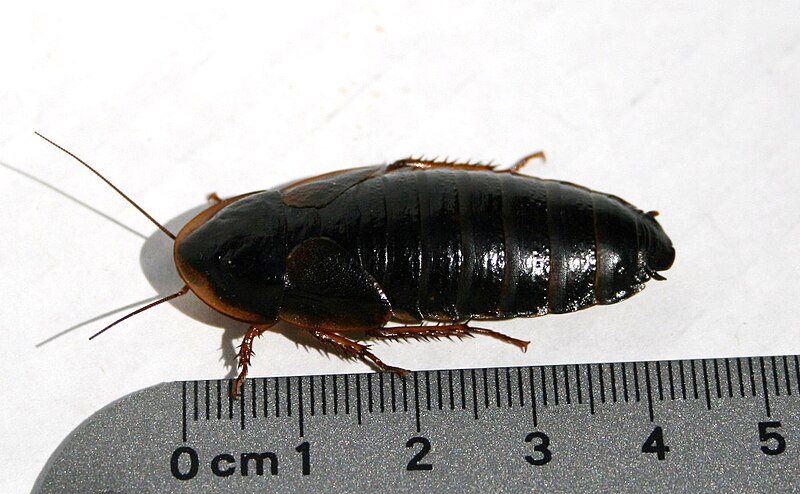 Click: The Orange Spotted Roach: an Interesting Pet and Valuable Food for Reptiles, Amphibians, Invertebrates, Birds and Fishes – Part 1, to read the first part of this article.
Click: The Orange Spotted Roach: an Interesting Pet and Valuable Food for Reptiles, Amphibians, Invertebrates, Birds and Fishes – Part 1, to read the first part of this article.
Substrate
When keeping large colonies as a food source for other animals, the roaches should be well-supplied with cardboard egg crate, paper towel/toilet paper rolls or crumpled sheets of cardboard upon which to climb. The bottom of the enclosure should be kept bare…substrate will complicate cleaning, encourage mold and make it difficult to locate small roaches.
At cleaning time, the cardboard, to which most of the roaches will cling, can be removed while the enclosure is washed (use hot water and bleach or table salt) and dried. The cardboard should be replaced from time to time as well.
Fecal material from the bottom of the enclosure, and old cardboard, should be frozen before being discarded to prevent un-noticed nymphs from establishing feral colonies.
If you are keeping smaller numbers of roaches as pets, you may wish to set up a naturalistic terrarium. R Zilla Alfalfa Bedding or Coconut Husk may be used as a substrate. Stock your terrarium with rocks, driftwood, and plastic reptile shelters…males will establish territories around and under such structures. In such a set-up you should be able to observe them competing for females (see below), and will be privy to other interesting behaviors not easily seen in a crowded colony situation.
Be sure to remove nymphs from time to time, as territoriality seems to break down under crowded conditions, and there will consequently then be less for you to observe.
Treated in this manner, as you might any other unusual pet, orange-spotted roaches will provide you with many surprises. We still have a great deal to learn about these insects…observant keepers stand a good chance of learning something new.
Water
I use R-Zilla Cricket Calcium Drink Supplement as the sole water source for all roach species. This and similar gel-based products eliminates the need for providing fruit as a water source, which can mold and cause health problems (a small amount of fruit added to the diet is a good idea) and supplies additional calcium to the insects.
Feeding
Jurassi-Diet or R-Zilla Cricket Food should be used as the basis of the diet. Both are readily accepted, and help to improve the roaches’ calcium: phosphorous ratio (in the event they are to be used as pet food).
Orange spotted roaches accept a wide variety of foods…but this should not trick us into thinking that they can survive on whatever is at hand. They should be provided a balanced diet, both for their health and that of the animals to which they may be fed.
To the basic diet of commercial cricket food I always add tropical fish food flakes (I have found such to be useful with all roach species, crickets, millipedes and many other invertebrates), powdered baby food, and a bit of wheat germ. They should also be fed fruits and vegetables once or twice weekly.
An interesting article on cockroach diversity and evolution (London Museum of Natural History) is posted at:
http://blattodea-culture-group.org/content/cockroaches-amazing-diversity
Image referenced from Wikipedia Commons, here.
 That Reptile Blog – Reptile, Amphibian and Exotic Pet Care and Information
That Reptile Blog – Reptile, Amphibian and Exotic Pet Care and Information
